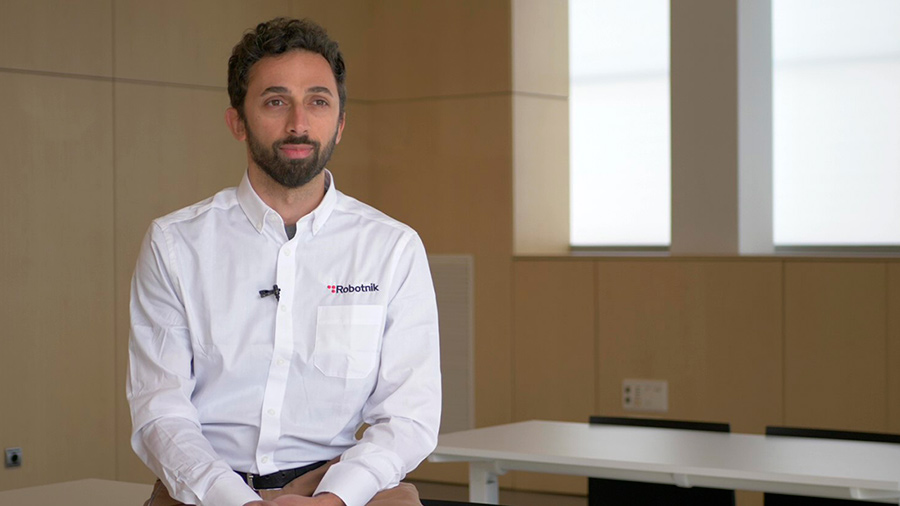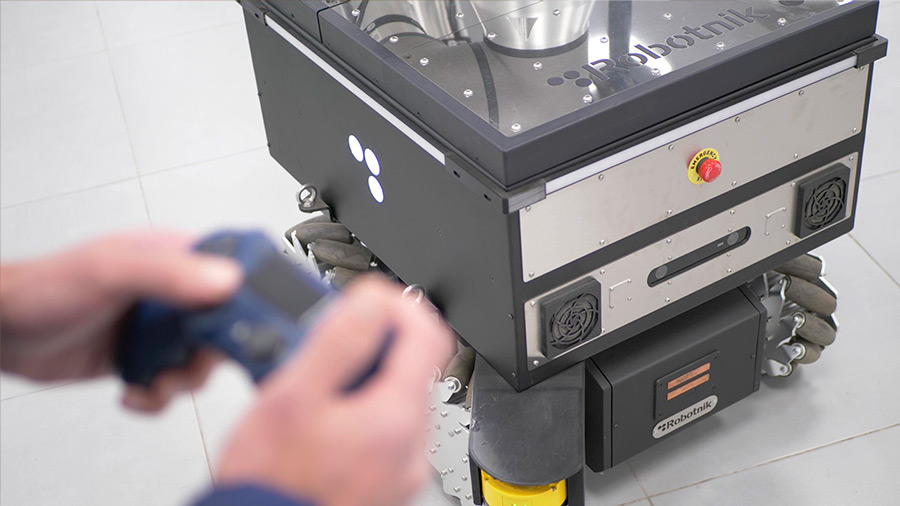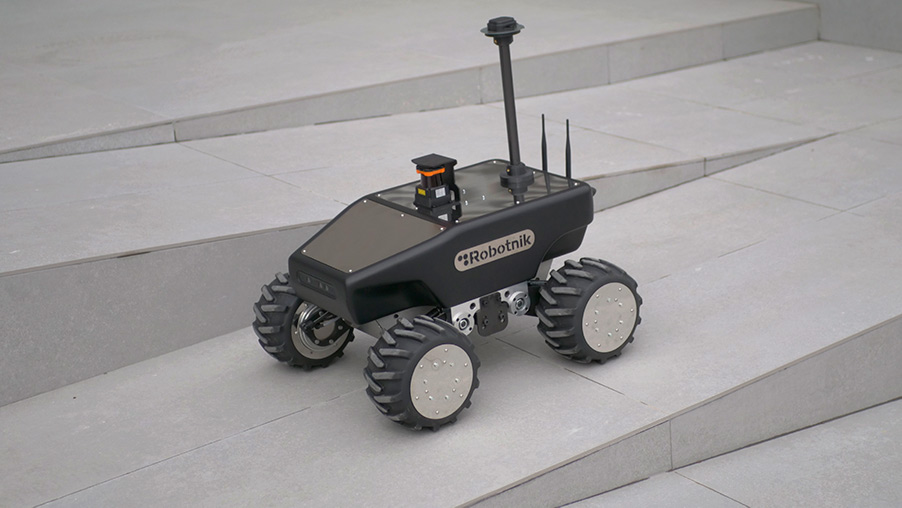One of the competitive values of Robotnik is its long trajectory not only as a manufacturer of mobile robotics, but also as part of more than 60 European research and development projects in robotics.
The Spanish company’s mobile robots and manipulators play a leading role in various projects focused on different sectors: inspection, logistics, agriculture, health or emergency and rescue among others.
Alessandro di Fava, project manager at Robotnik, talks about technological innovation, what these projects bring to the robotics sector and other developments in this interview.
R&D robotics projects are a particular field.
Why we as Robotnik are involved in R&D projects? Let’s see what R & D projects like the European projects can bring into the robotics sector and for society in general.
ADF: My name is Alessandro Di Fava, I’m project manager in Robotnik.
Currently I’m involved in 4 European projects that are part of the Horizon 2020 program: 5G-ERA, ODIN, BACCHUS and PROMEN-AID.
Inside those projects, our goal is to provide mobile robots and also develop some improved technologies that increase our AMR applications. I’m talking, for example, about the use of artificial intelligence in robotics or about robots and 5G.
5G and robotics
ADF: 5G brings some features that enhance the communications among different devices. One of the good things of 5G is that on the network you can run some specific functions reducing problems like delayed or latency.
I know it sounds like very technical terms but it can actually be understood with simple examples. 5G and robotics bring many new possibilities.
I know it sounds like very technical terms but it can actually be understood with simple examples. 5G and robotics bring many new possibilities.
Until now, when you have to communicate between devices with existing communications (wireless, 4G, etc.), in many cases the information doesn’t arrive in time.
Imagine a team of firefighters having to control a robot in real time in an emergency situation, for example. They need fast information to make quick decisions, as the success of the mission depends in part on there being no communication delays.
I can also tell you that Robotnik is already marketing the first 5G robots.
What does 5G imply for robots?
As Alessandro says, for collaborative robots, 5G offers a framework that will allow us to make significant advances based mainly on 3 aspects: low latency, massive M2M (mass communication between remote machines) and IoT.
All disruptive technologies – AI, IoT or augmented reality – are now empowered by the implementation of a 5G connection.
5G robots:
- High bandwidth: required for data, video and audio streams, both for telecontrol and for cloud or edge processing.
- Low latency and guaranteed latency: this opens up the possibility of teleoperation (and telepresence) to previously impossible levels. It also enables centralised fleet control, reducing computational needs on robots.
- Cloud computing: the robot does not have to have large processing capabilities, it can rely on AI algorithms or sensor processing in the cloud, allowing for a cheaper, more versatile and easier to install product, cheaper and with lower energy consumption..
- Much fluid and higher quality teleoperation.
This development is a major boost for intelligent automation. On the road to Smart Factories, the 5G connection integrated into our mobile platforms opens up an unprecedented range of possibilities in production environments: interconnection between robots and replicas with the digital twin, greater personalisation of applications, cloud computing or greater use of Artificial Intelligence systems.
What do you think is the main benefit for a robotics company of participating in R&D projects?
ADF: We manufacture indoor or outdoor mobile robots that can be used in different sectors: agriculture, healthcare, inspection and surveillance, logistics… and we as a company with 20 years of experience in the sector, must ensure certain guarantees to our customers. Guarantees that our mobile robots have indeed been tested and will perform as expected in a specific environment, often sharing tasks with humans.
In that European R&D robotics projects we can test some applications with all the scenarios and infrastructure that a big project offers you and then, after the 2, 3 or more years of duration of each project, you can go to the customer and say: okey, that mobile robot is available to this or that applications in this or that sectors.
That’s why, the participation in this kind of projects brings benefits for the robotic providers but also for the final customers and ender users.
Imagine a hospital use case. Until now, the nurses are doing many general time-consuming jobs like bringing material, papers, documents from one side to another inside the hospital, that means less time to do their real work.
Robontik AMR working on R&D projects
We have some of our AMR like RB-1 BASE or RB-THERON, working in hospitals and doing that kind of logistics tasks.
But, how have we come to verify that these robots are safe to work with people inside a hospital?
Robotnik as a company has to prove that it is possible and reliable for our AMRs to work safely inside hospitals… okey, we develop the necessary mobile robots, integrate the required technology, etc. But we don’t have a hospital with patients to make the necessary demos.
So H2020 gives us the opportunity to validate and improve applications in real-life scenarios.
This is one of the main advantages of participating in big R&D projects: we work with several partners and each of us contributes in a different way, thus making possible a real experimental framework that would otherwise be impossible.
Alessandro di Fava has more than 10 years of experience in the field of robotics. He started his PhD at the Scuola Superiore Sant’Anna, based in Pisa, Italy, and continued with work experiences at two robotics service platform providers in Spain. I have participated in several EU-funded research and innovation projects in collaboration with a consortium of European universities and industrial partners. Currently, he is R&D project manager at Robotnik.




